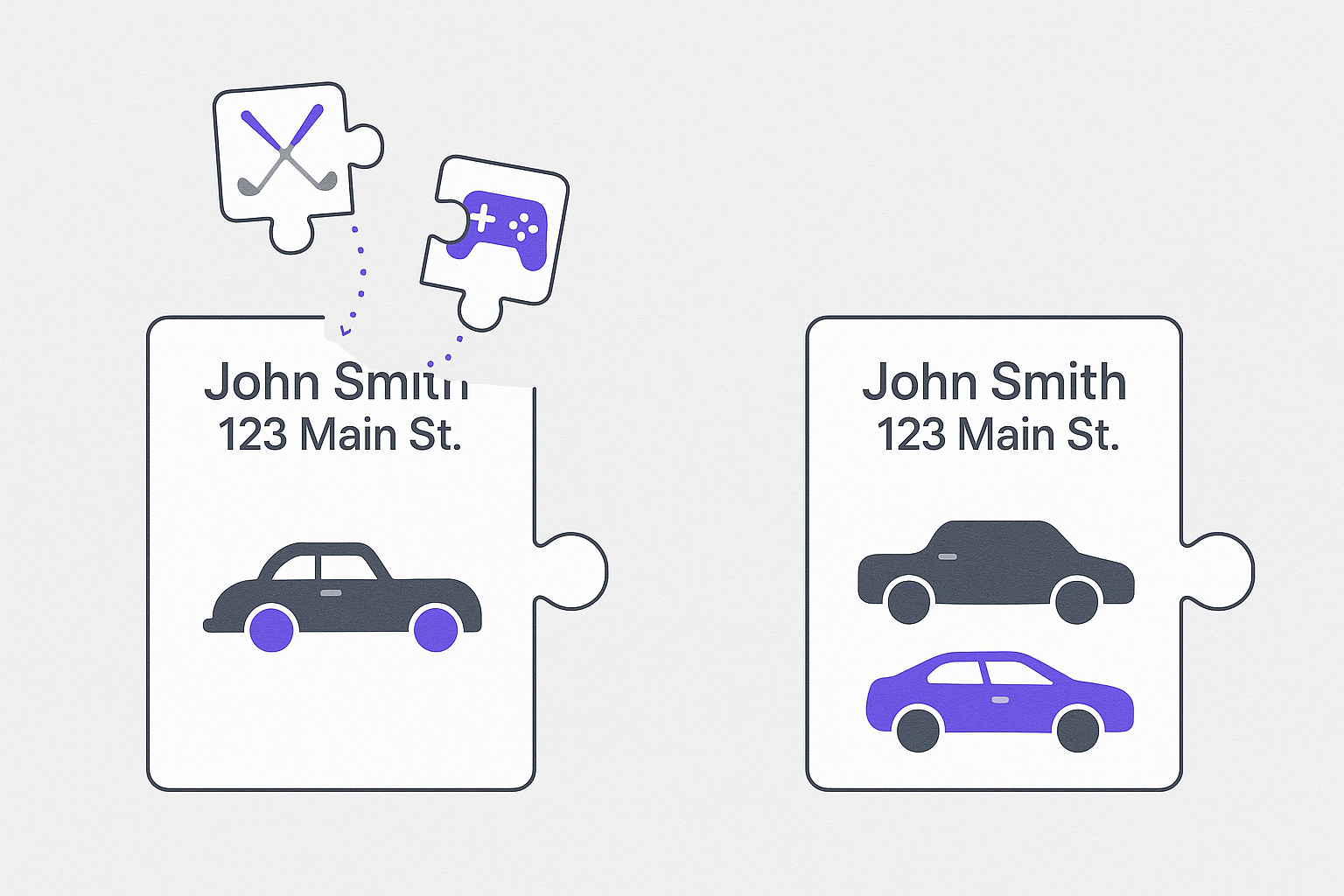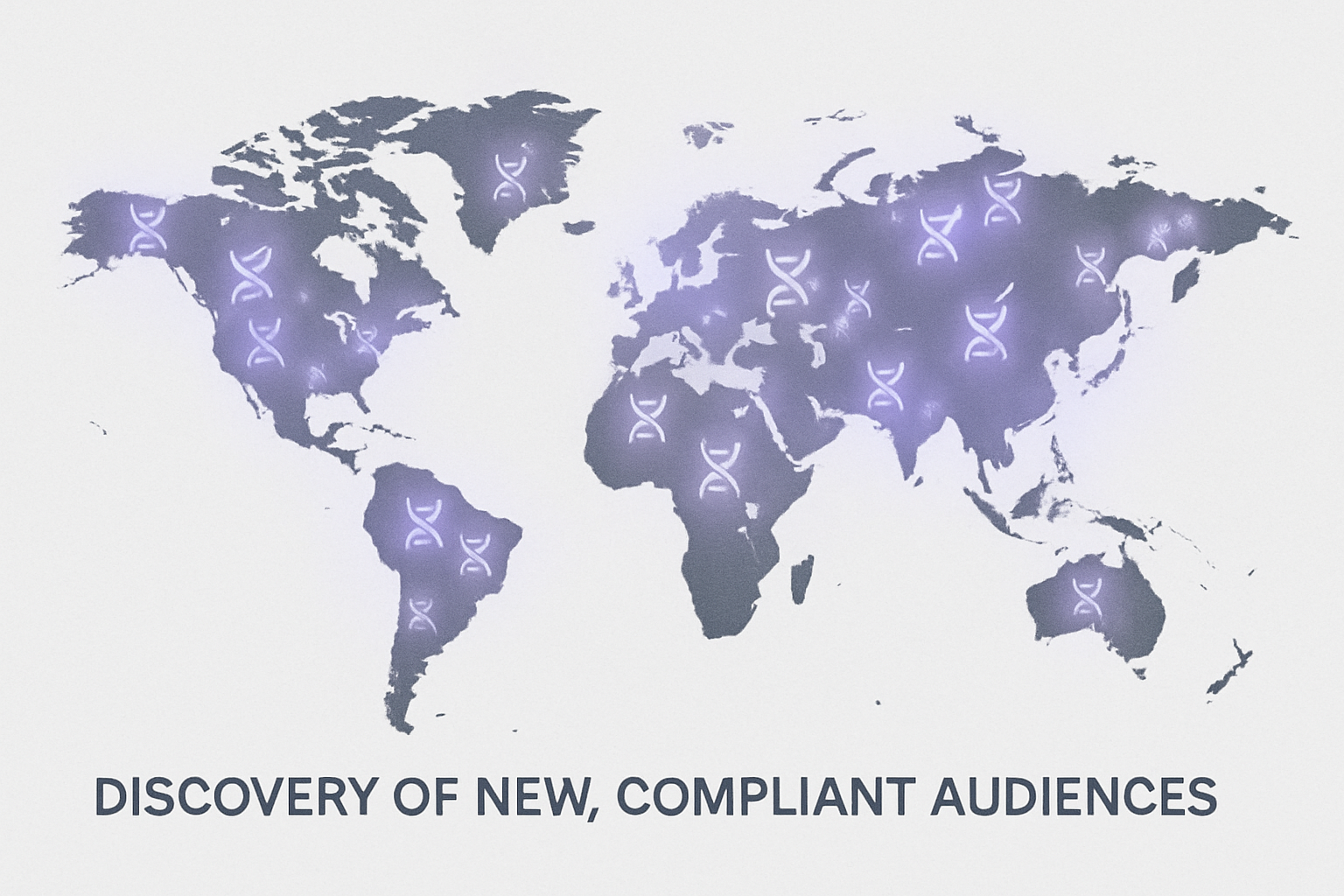Meet Catherine, a loyal customer who has interacted with your business for years. In one system, she’s recorded as "Cathy Smith" at an old address. In another, she’s "Catherine S." with a nickname and new email. She recently made an online purchase as "C. Smith." A traditional CRM sees these as three unrelated people. Consequently, Catherine receives three separate streams of marketing – including new customer offers targeted at her under one identity, while another profile misses out on loyalty perks she’s earned. It’s a fragmented, frustrating experience for her, and a costly mistake for you.
Companies without effective identity resolution are essentially blindfolded. Duplicate records lead to wasted spend (e.g., paying to show the same person redundant ads or mailers) and missed opportunities (failing to recognize a high-value customer in a new channel). One study called this the “$1B identity crisis,” noting that mismatched profiles directly or indirectly affect 53% of revenue on average. Nearly one in four customer profiles are mismatched. It’s like trying to serve a customer while looking at them through a broken mirror – you make mistakes.
Catherine might get annoyed by the irrelevant outreach (“Why do they keep pushing me to sign up, when I’m already a member?”), or feel undervalued when her long history isn’t acknowledged. The business, meanwhile, is essentially burning cash on acquiring or engaging “new” customers that it already has in its database. Industry benchmarks show that each duplicate record can cost $10 (or more) to fix, and if left unresolved, can incur ~$100 in downstream costs (support time, mis-targeted offers, lost revenue). To survive in a world where 75% of customers expect consistent, personalized interactions across channels, companies must move beyond this fractured status quo.
Our system ingests all those fragments – Cathy, Catherine S., C. Smith – and doesn’t simply look for exact matches. It looks at the context. Are the purchase patterns similar? Are the physical addresses or device locations geographically close? Is there a temporal continuity (e.g., one record’s activity starts right after another’s stops)? By analyzing these contextual clues (what we call the data constellation around each profile), DarkMath’s vector engine links the records with high confidence. It unifies them into a resilient Golden Record for Catherine – one that persists and updates.
And unlike a rigid rule-based merge, this Golden Record is probabilistic and adaptive. If Catherine uses a new nickname or moves to a new city, the system can assimilate that new data without “breaking” the identity, because it recognizes deeper patterns that remain consistent. DarkMath extends this intelligence to behavioral signals as well – it doesn’t matter if Catherine’s identifier changes, her vector persona carries through.
Immediately, this yields tangible benefits. First, no more wasted acquisition spend on known customers – Catherine won’t get treated as a stranger. Companies have found that bad identity data leads directly to wasted third-party data spend and mis-targeted ads, so stopping that waste drops straight to the bottom line. One estimate suggests a connected customer view can reduce duplicate outreach and other inefficiencies such that every $1 spent preventing a bad record saves $100 in downstream cost.
Second, increased customer lifetime value. With a unified profile, Catherine’s true value and preferences are known everywhere. She’s greeted as a VIP in every channel, which deepens loyalty and share-of-wallet. The ROI is significant: businesses that excel at using unified customer data for personalization generate 20% more revenue than those that don’t. This kind of relevancy is proven to boost engagement and retention (87% of marketers report personalization positively impacts retention).
In short, DarkMath turns fragmented customer relationships into loyal, profitable ones. Catherine’s story illustrates a simple truth: you can’t afford not to know who your customer really is. DarkMath ensures you do.


